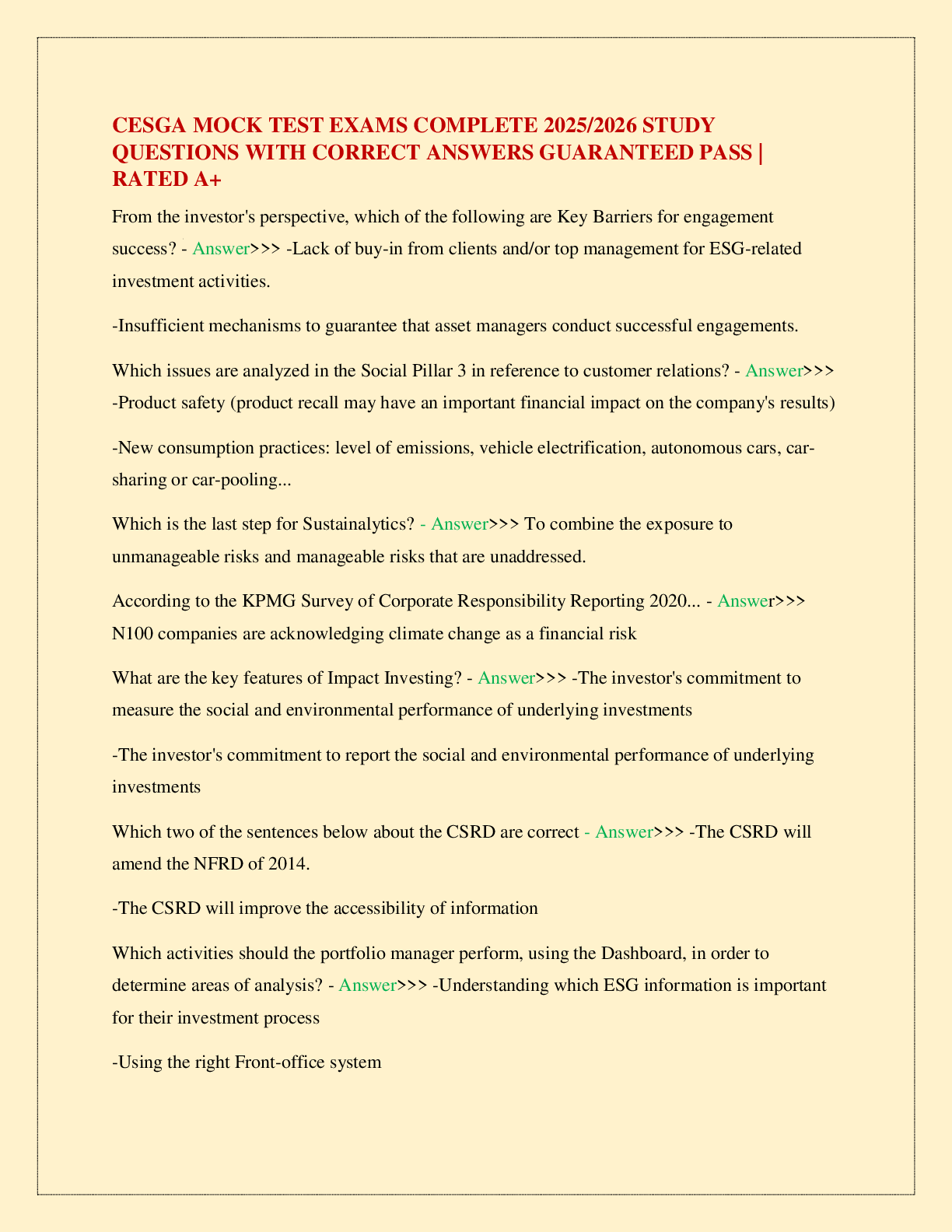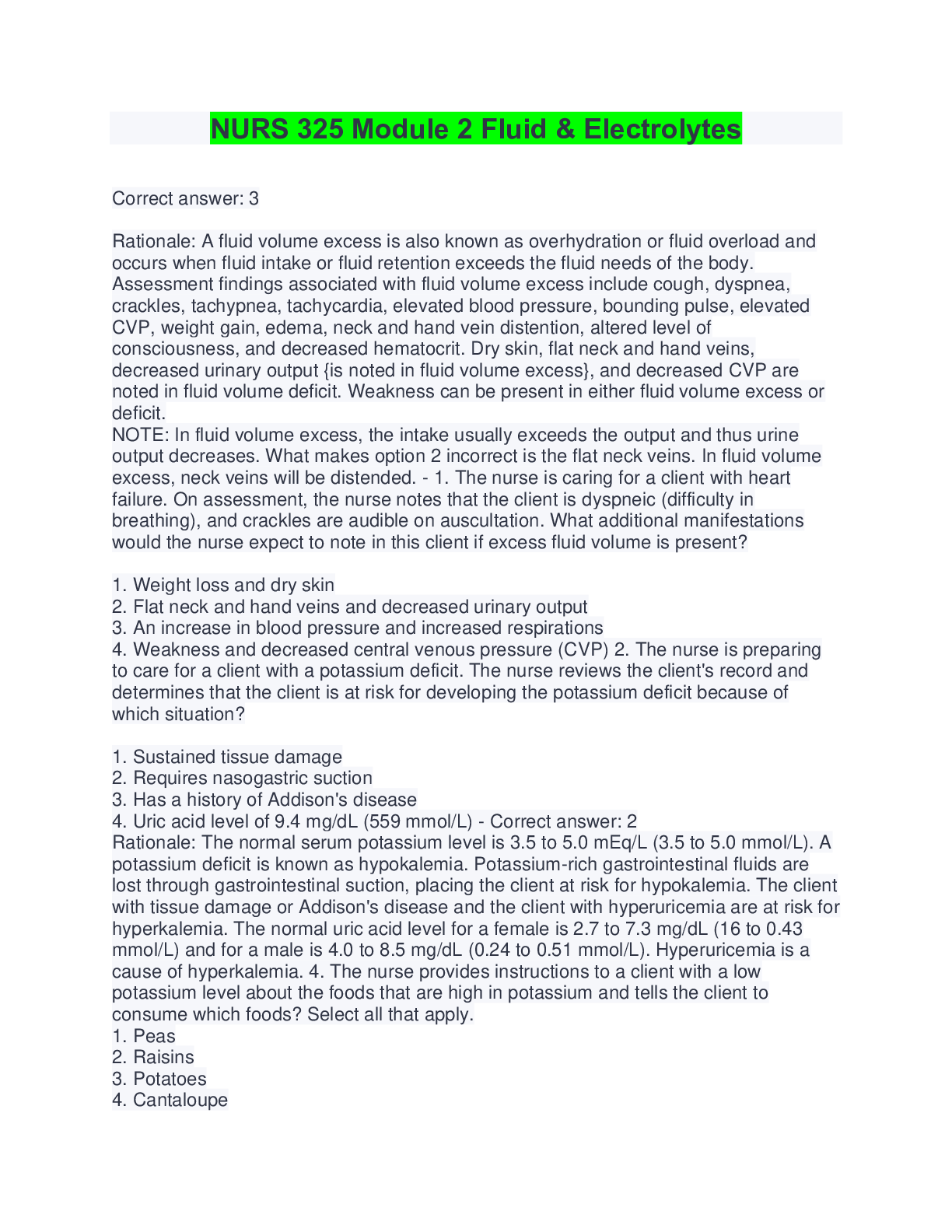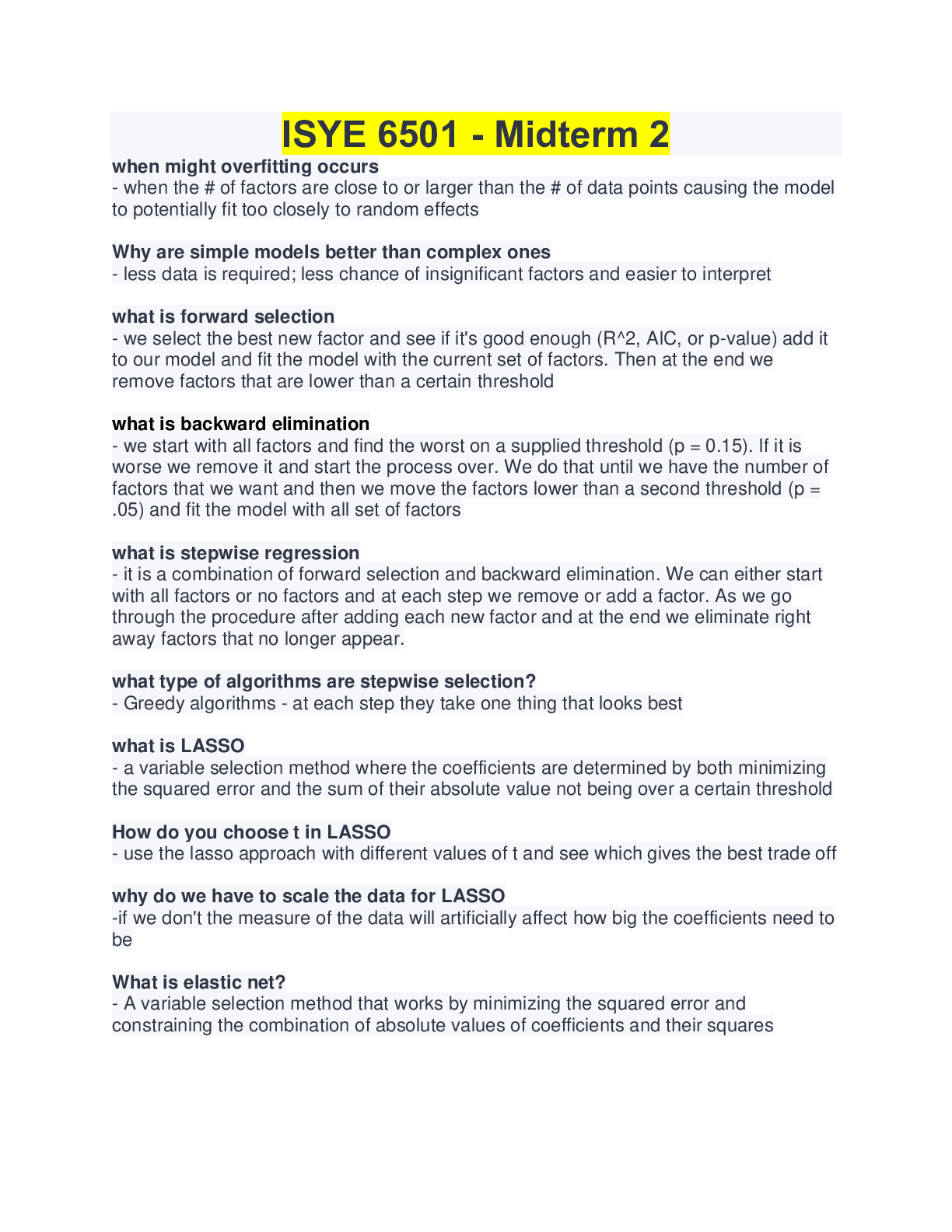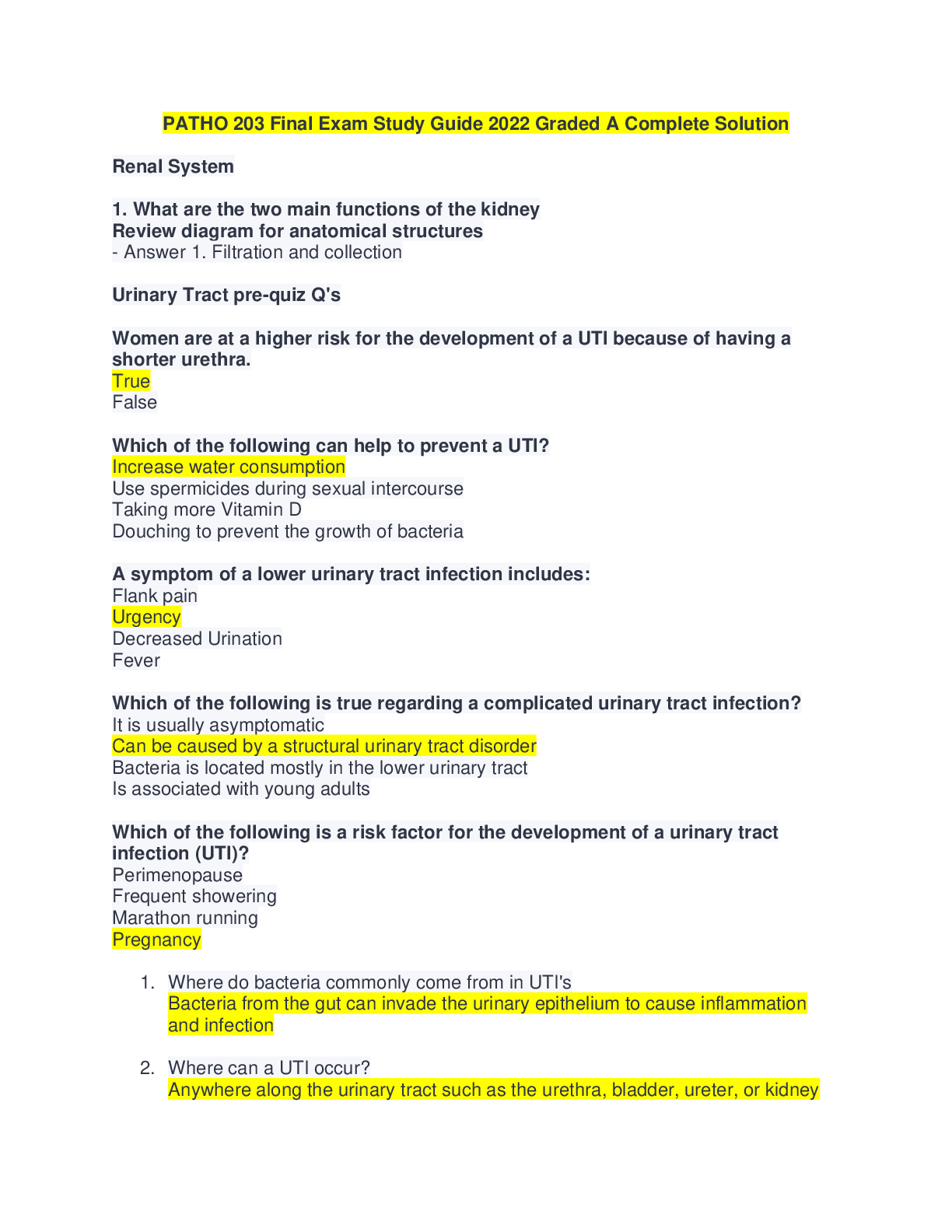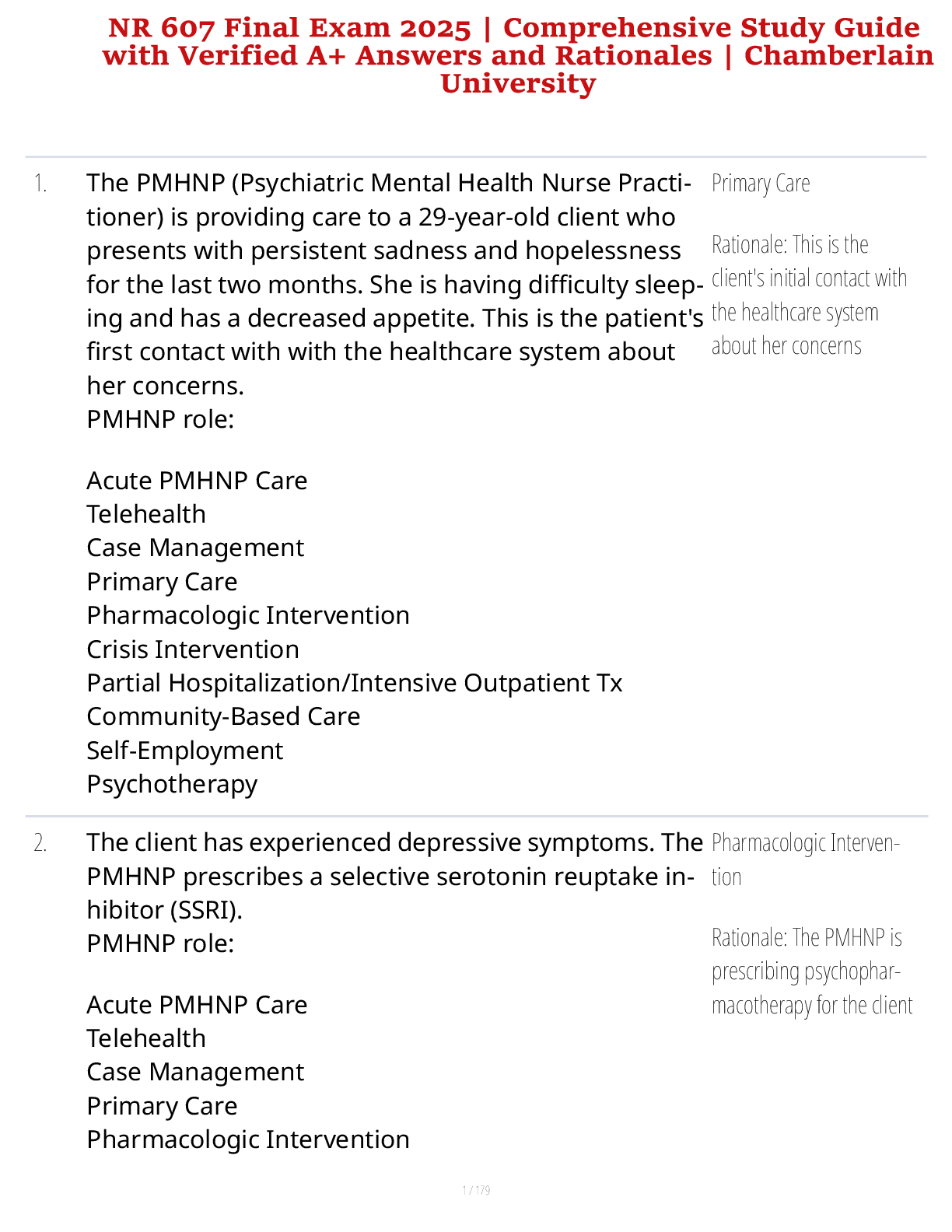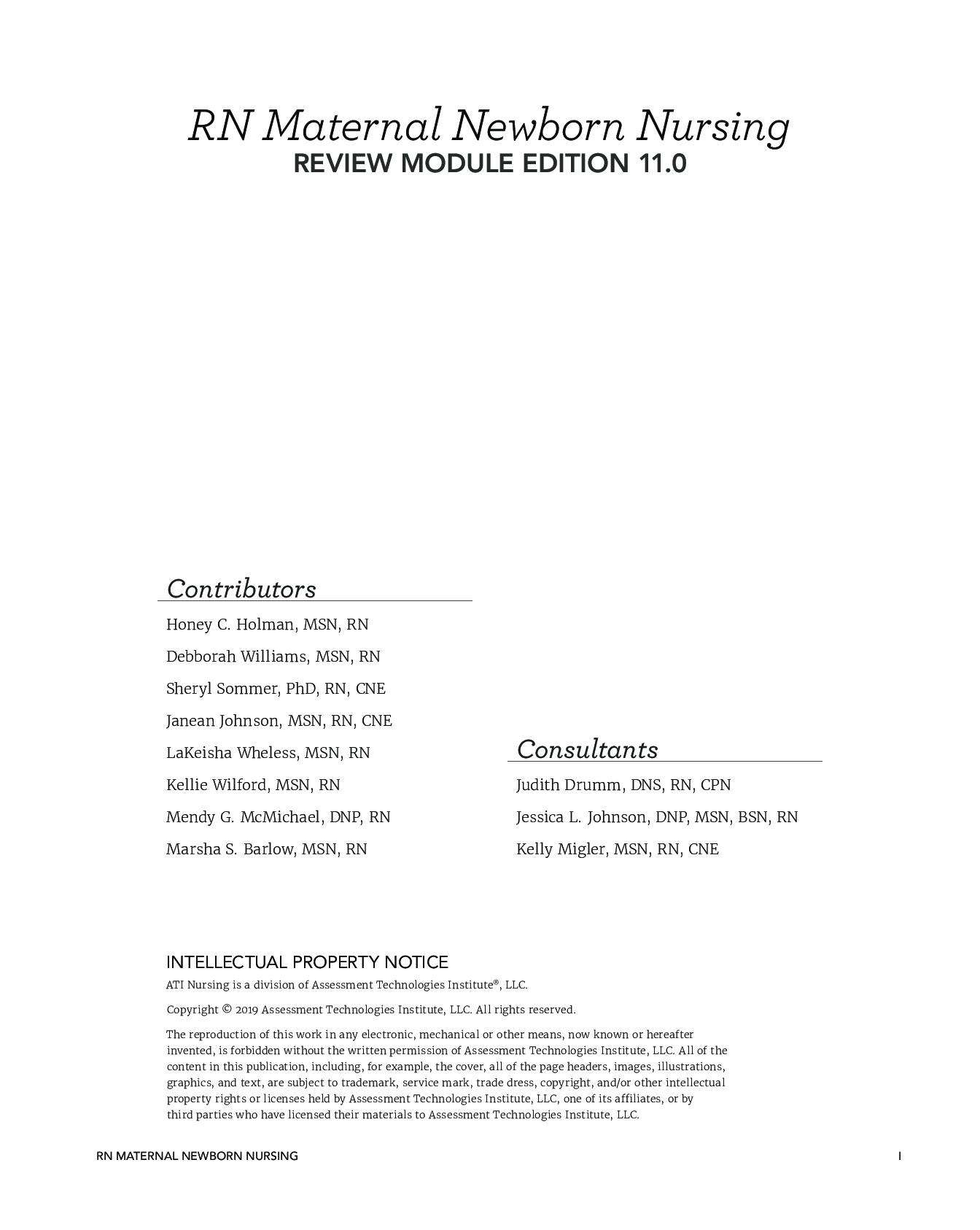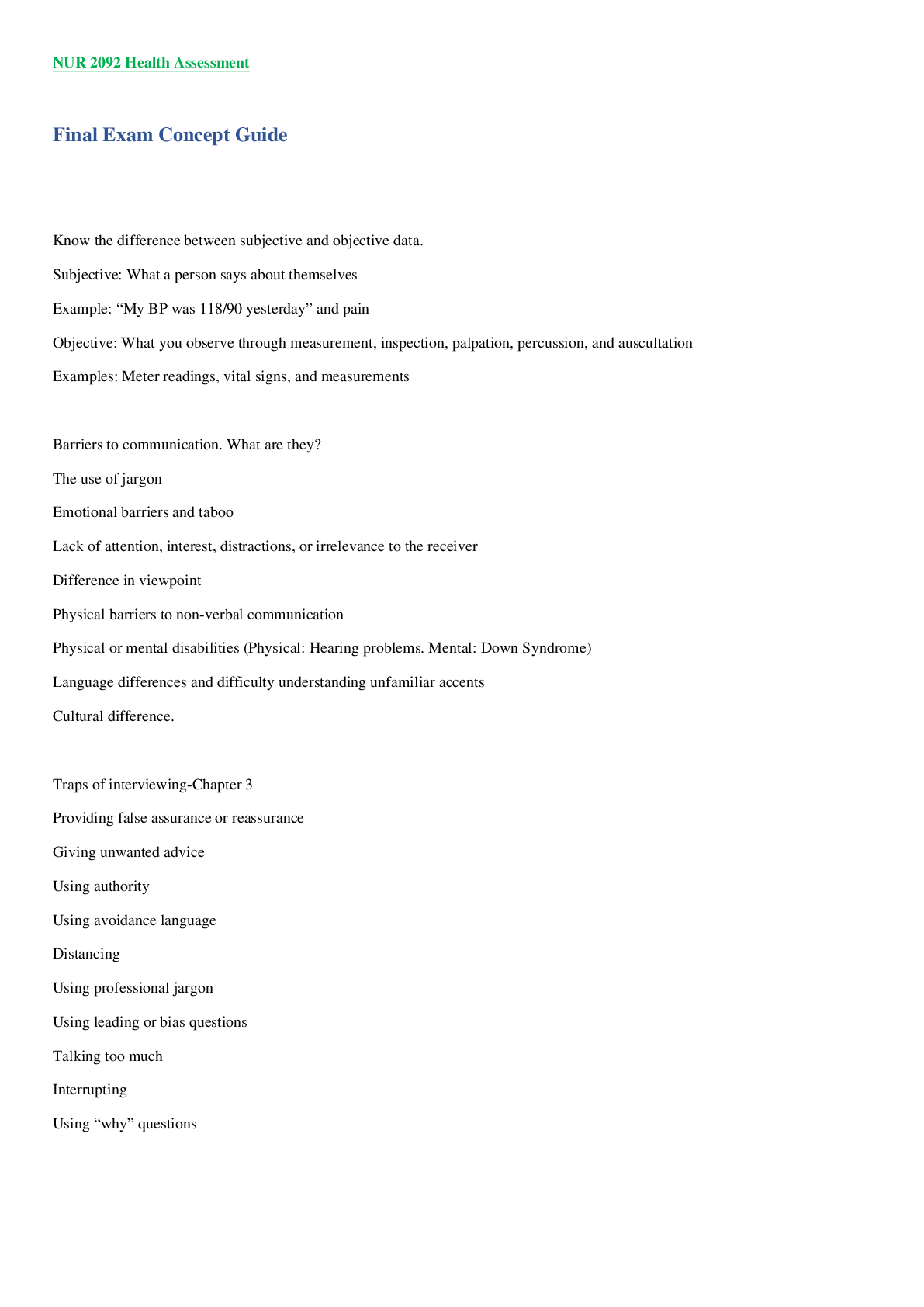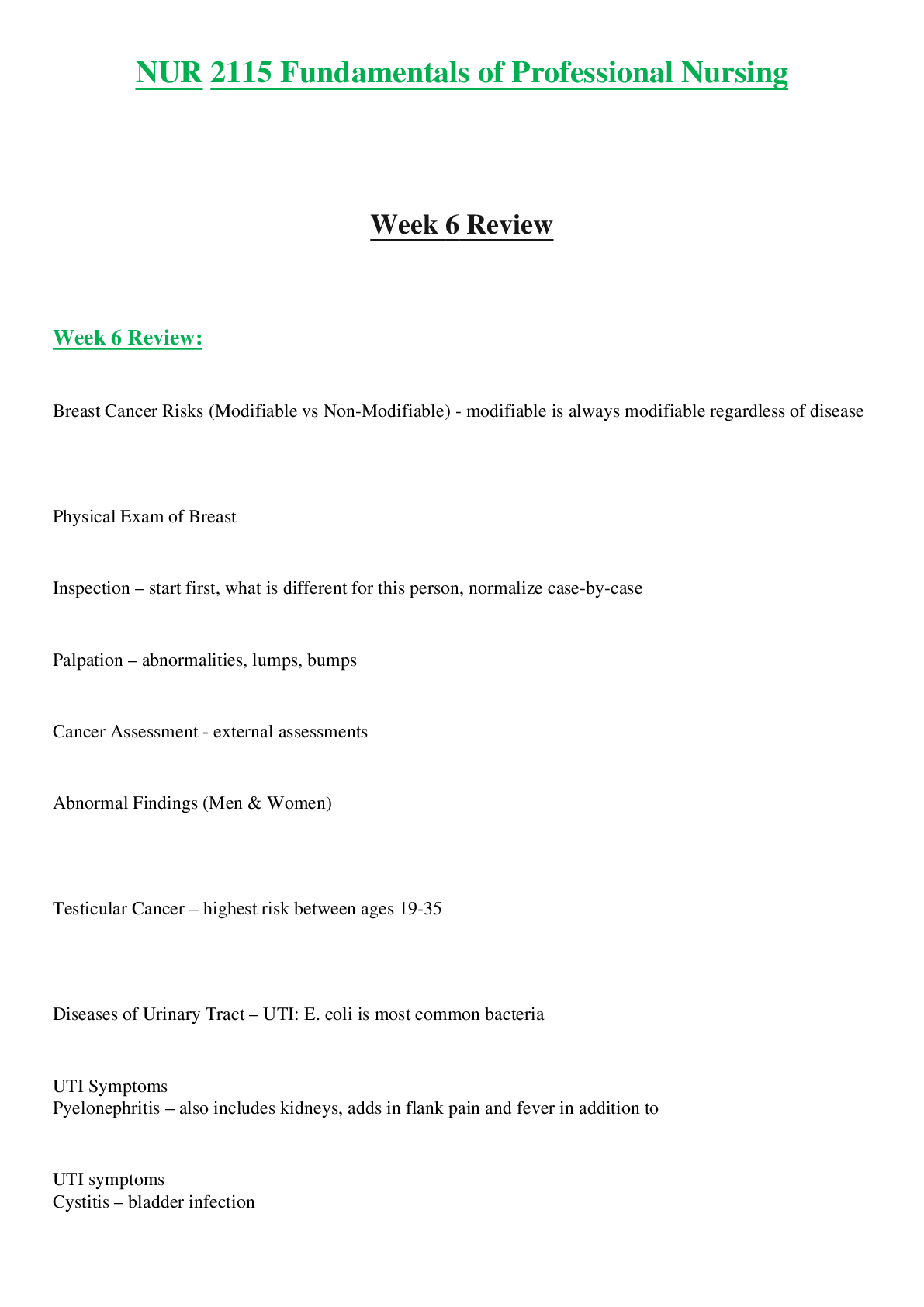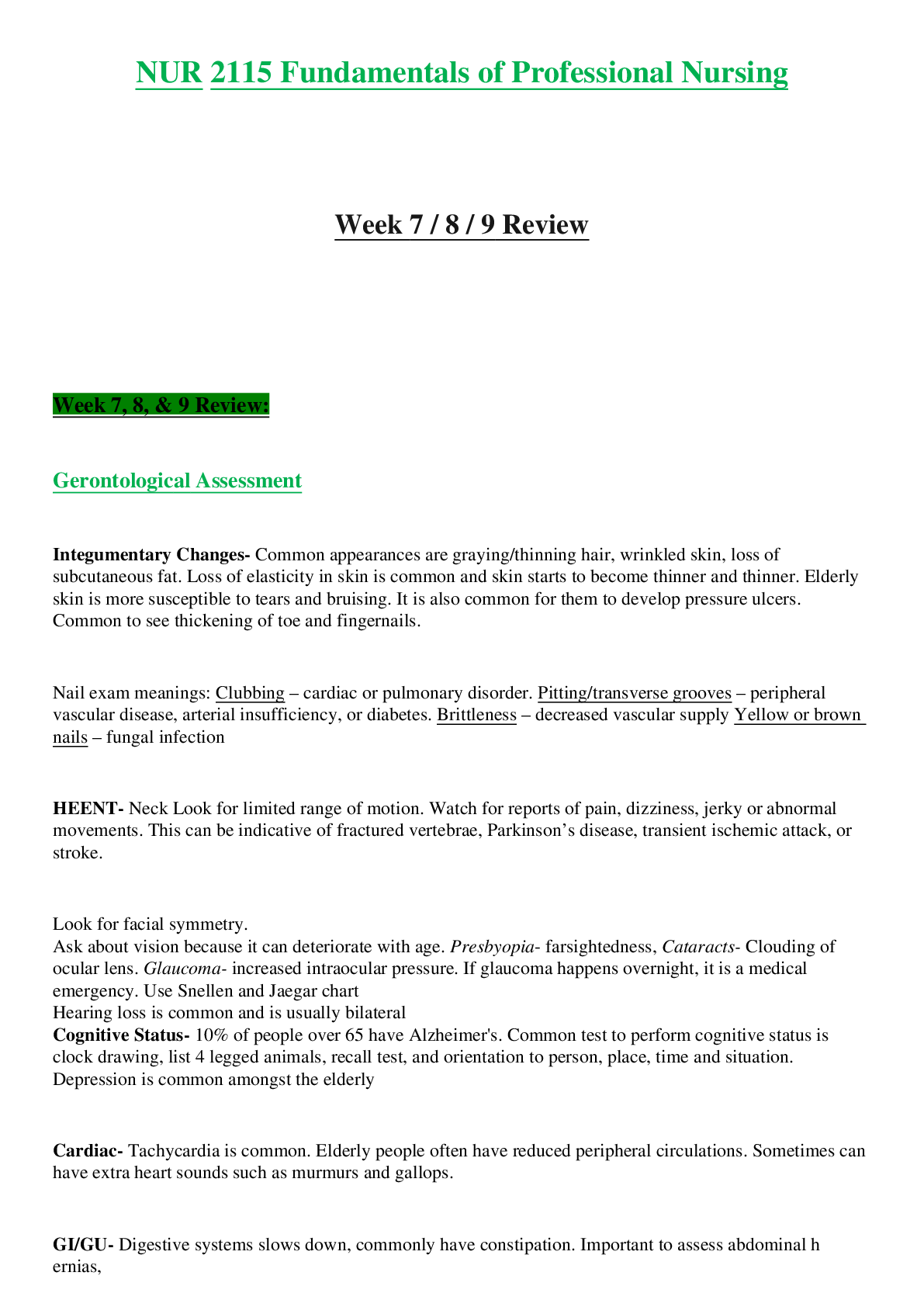NURS 325 Module 2 Fluid & Electrolytes
Document Content and Description Below
Rationale: A fluid volume excess is also known as overhydration or fluid overload and
occurs when fluid intake or fluid retention exceeds the fluid needs of the body.
Assessment findings associated
...
with fluid volume excess include cough, dyspnea,
crackles, tachypnea, tachycardia, elevated blood pressure, bounding pulse, elevated
CVP, weight gain, edema, neck and hand vein distention, altered level of
consciousness, and decreased hematocrit. Dry skin, flat neck and hand veins,
decreased urinary output {is noted in fluid volume excess}, and decreased CVP are
noted in fluid volume deficit. Weakness can be present in either fluid volume excess or
deficit.
NOTE: In fluid volume excess, the intake usually exceeds the output and thus urine
output decreases. What makes option 2 incorrect is the flat neck veins. In fluid volume
excess, neck veins will be distended. - 1. The nurse is caring for a client with heart
failure. On assessment, the nurse notes that the client is dyspneic (difficulty in
breathing), and crackles are audible on auscultation. What additional manifestations
would the nurse expect to note in this client if excess fluid volume is present?
1. Weight loss and dry skin
2. Flat neck and hand veins and decreased urinary output
3. An increase in blood pressure and increased respirations
4. Weakness and decreased central venous pressure (CVP) 2. The nurse is preparing
to care for a client with a potassium deficit. The nurse reviews the client's record and
determines that the client is at risk for developing the potassium deficit because of
which situation?
1. Sustained tissue damage
2. Requires nasogastric suction
3. Has a history of Addison's disease
4. Uric acid level of 9.4 mg/dL (559 mmol/L) - Correct answer: 2
Rationale: The normal serum potassium level is 3.5 to 5.0 mEq/L (3.5 to 5.0 mmol/L). A
potassium deficit is known as hypokalemia. Potassium-rich gastrointestinal fluids are
lost through gastrointestinal suction, placing the client at risk for hypokalemia. The client
with tissue damage or Addison's disease and the client with hyperuricemia are at risk for
hyperkalemia. The normal uric acid level for a female is 2.7 to 7.3 mg/dL (16 to 0.43
mmol/L) and for a male is 4.0 to 8.5 mg/dL (0.24 to 0.51 mmol/L). Hyperuricemia is a
cause of hyperkalemia. 4. The nurse provides instructions to a client with a low
potassium level about the foods that are high in potassium and tells the client to
consume which foods? Select all that apply.
1. Peas
2. Raisins
3. Potatoes
4. Cantal
[Show More]
Last updated: 3 years ago
Preview 1 out of 11 pages

